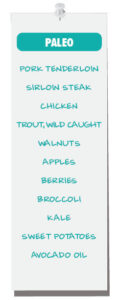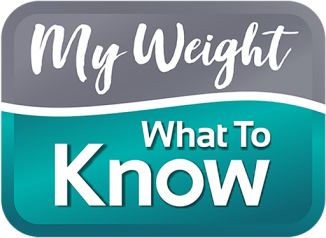By Melinda Maryniuk, MEd, RD, CDCES
We review several different eating approaches in our “Dietitian’s Review” series with the goal of helping people who are looking to evolve their eating style towards better health. It’s important to emphasize that “going on a diet” is very rarely associated with long-term success with weight. We provide these reviews for anyone who wants to improve their health and is looking for an eating approach that will best fit their lifestyle and preferences.
***
What is it?
Paleo is short for paleolithic. The Paleo diet, or sometimes called the caveman diet, recommends eating only food that was available during the Paleolithic era. In other words, if the caveman ate it… you can too. While it is not necessarily “low-carb”, some people follow a low-carb version.
What do I eat?
While different authors have slightly different interpretations of what can and can’t be eaten on the Paleo diet, in general, the emphasis is on meats and seafood, fruits, vegetables, and nuts. The Paleo diet usually excludes dairy, grains, sugar, legumes, processed oils, salt, alcohol and coffee. It also excludes very starchy vegetables such as potatoes and butternut squash. It excludes all processed foods.
Is it effective?
There is very little research on the Paleo diet and none carried out over a long period of time as to demonstrate effectiveness. Research is also difficult as there are so many variations of this diet. As with many popular diets that require omitting major food groups, there is concern not only about an individual’s ability to adhere to such strict rules, but also concern about omitting major groups of food. While some of the principles are sound, like the emphasis on more whole and unprocessed foods, most experts agree this is not recommended long term.
What are some pros and cons?
Pros: Emphasis on fruits and veggies, lean meat, seafood and less processed foods is beneficial.
Cons: Not much research pointing to benefits; concern of long-term loss of nutrients (calcium, B vitamins) when major food groups such as grains and dairy are omitted. Can be expensive.
How do I learn more?
- ThePaleoDiet.com
- It is strongly recommend if you want to try the Paleo plan, to talk with your doctor and a dietitian.
What are some examples of things I’d buy at the grocery store?

Note: There are many approaches to weight loss that can be successful for people. My Weight – What to Know does not recommend any particular diet, but is happy to share facts about a variety of approaches. As with all meal planning approaches, regular exercise is recommended.
Eating a healthy diet and being active are both very important, but for many people, diet and exercise alone aren’t enough to help them reach their weight-loss goals. If this sounds familiar, read this fascinating article about what to do when diet and exercise aren’t getting you to where you want to be.
To find a physician near you who specializes in weight management, click here.
Get a weekly text to help you stay on track with your health goals! Click here to sign up.
This article was sponsored by Novo Nordisk Canada. All content is created independently by My Weight – What To Know with no influence from Novo Nordisk.

